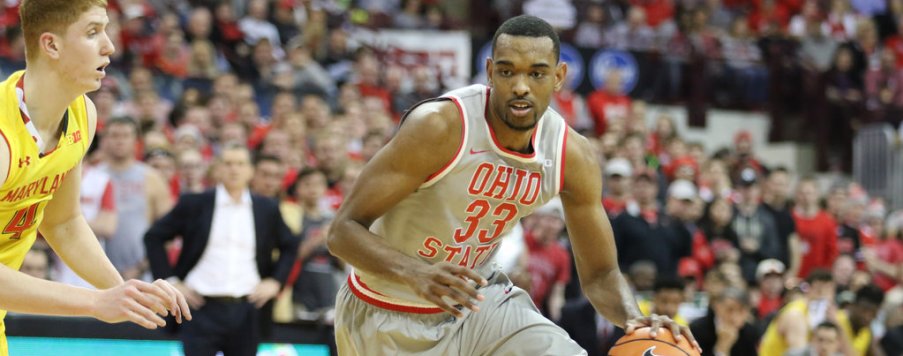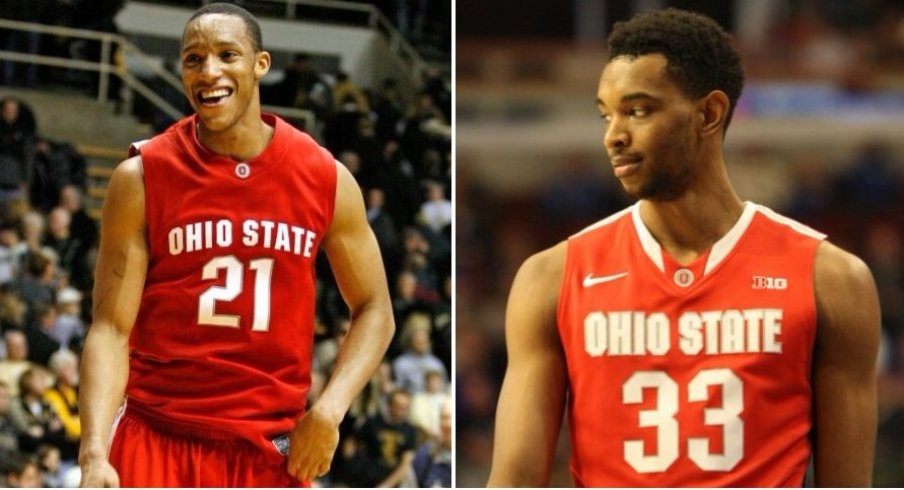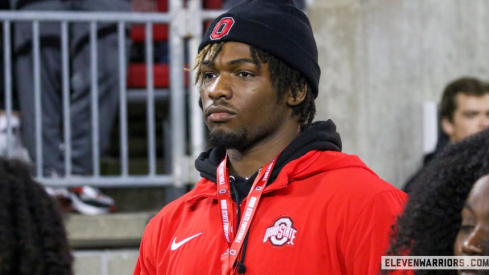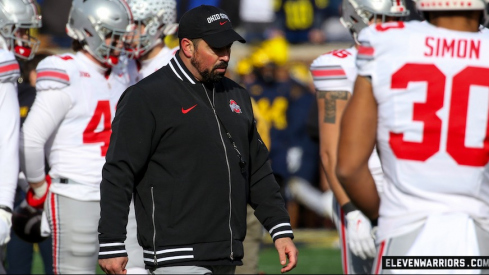Ohio State swingman Keita Bates-Diop saw action in just nine games last season before having surgery on a stress fracture in his left leg.
The injury caused Bates-Diop to miss 23 games total, including the team's final 18 as the Buckeyes limped to a 17-15 overall record.
In his nine games played, a then-junior Bates-Diop averaged 9.7 points and 5.2 rebounds in 23 minutes on the heels of a strong sophomore season in which he tallied 11.8 points and 6.4 boards in over 31 minutes per game.
Despite the flashes shown by Bates-Diop over the last two seasons, there were still questions as to how the Normal, Illinois product would respond to not only his return from surgery but also increased expectations as new head coach Chris Holtmann arrived in need of a big time scorer and rebounder.
Through 18 games, Bates-Diop has emphatically answered those questions.
Behind Bates-Diop, the Buckeyes are off to a surprising 5-0 start in Big Ten play highlighted by a spanking of then-No. 1 Michigan State as part of a 14-4 overall record.
In the defeat of Tom Izzo's crew, Bates-Diop went off for 32 points on 12-of-21 shooting which served as the middle of a three-game stretch in which he tallied 85 points, good for the most over such a span since Michael Redd went for 86 points back in 1998.
But he's not been just a three-game wonder. In fact, his season-to-date stats stack up pretty well in comparison to the first 18 games Evan Turner played during the 2009-10 season when he ended up winning National Player of the Year honors.
| SEGMENT | G | MPG | FG / FGA | FG% | 3FG / 3FGA | 3FG% | RPG | APG | TOG | PPG |
|---|---|---|---|---|---|---|---|---|---|---|
| BATES-DIOP NON-CONF | 13 | 31.3 | 92 / 183 | 50.3% | 25 / 69 | 36.2% | 6.5 | 1.2 | 2.1 | 18.9 |
| TURNER NON-CONF | 9 | 32.6 | 68 / 119 | 57.1% | 2 / 11 | 18.2% | 11.3 | 5.7 | 4.1 | 18.4 |
| BATES-DIOP BIG TEN | 5 | 33.4 | 44 / 72 | 61.1% | 14 / 24 | 58.3% | 9.6 | 1.4 | 1.2 | 24.0 |
| TURNER BIG TEN | 9 | 34.9 | 72 / 132 | 54.5% | 5 / 17 | 29.4% | 7.3 | 5.1 | 3.1 | 20.9 |
| BATES-DIOP TOTAL | 18 | 31.9 | 136 / 255 | 53.3% | 39 / 93 | 41.9% | 8.8 | 1.3 | 1.8 | 20.3 |
| TURNER TOTAL | 18 | 33.7 | 140 / 251 | 55.8% | 7 / 28 | 25.0% | 9.3 | 5.4 | 3.6 | 19.7 |
Comparing the two is a bit odd considering the two played different games. Turner was essentially a point guard during his 2009-10 season as Jeremie Simmons and P.J. Hill were overmatched against even average perimeter defenders and therefore relegated to about 12 minutes each per game and some of Simmons' time was seen at the two-guard. That said, Turner would initiate the offense but still use his size to mix it up on the glass and certainly defended other positions than the opposing point.
Meanwhile, Bates-Diop is typically deployed as more of a traditional 3-man or stretch-4 and therefore doesn't bring the ball up the floor except in fairly rare instances where he grabs a defensive rebound and opts to lead transition.
Those factors make it hard to compare turnovers per game where Bates-Diop has an expected across-the-board advantage due to handling the ball so much less than Turner was forced to do.
One particular commonality however is both stand 6-foot-7 with long wingspans and leverage that length on the glass. Another is the midrange game. Turner was a master of getting to the the elbows and using length and footwork to get off floaters. Bates-Diop is also a beast inside foul-line extended though he's maybe a little more likely to pull up for a jumper while Turner might have tried more often to get deeper into the lane.
Comparing the non-conference ledgers, Bates-Diop has logged more games than Turner did against such foes (more on that in a minute) and The Villain posted significantly better numbers in field goal percentage, rebounds per game and assists per game.
On the flip, Bates-Diop boasts an ever-so-slight advantage in points per game and is clearly the superior long distance threat.
Looking at the duo's numbers in conference, you'll see Bates-Diop with just five of his 18 games coming against Big Ten foes while Turner played nine as part of his first 18 games of the 2009-10 season.

The anomaly is due to Turner suffering transverse process fractures of the second and third lumbar vertebra of his spine during an awkward landing following a dunk in the early in the first half of a December 5th clash against Eastern Michigan.
The injury caused Turner to miss six games – the last four non-conference tilts against Butler, Presbyterian, Delaware State and Cleveland State, and then a pair of conference battles with Wisconsin and Michigan.
During conference play, Turner's scoring increased to 20.9 over those nine games on a steady 54.5% and while his assists stayed flat to his non-conference output, his rebounds per game decreased by four to 7.3.
Keeping in mind Bates-Diop has a smaller sample size of just five Big Ten games as part of his first 18 outings this season, he's been absolutely sensational averaging 24.0 points a night on a white-hot 61.1% from the field including 58.3% from distance while pulling down 9.6 boards per contest.
Rolling up the full 18 game totals, KBD has the slight edge in points (20.3 to 19.7) and significantly better marks in three-point accuracy (41.9% to 25.0%) and turnovers per game (1.8 to 3.6) though we talked about why earlier.
Similar to why we can't look at turnovers too closely, the same is true for assists where Turner has a huge lead (5.4 to 1.3). Other than that, Turner's edge on KBD in field goal percentage is not overly large (55.8% to 55.3%) and his lead in rebounds per game is just half a rip per night (9.3 to 8.8).
Of course, Bates-Diop has a lot of work left to do if he wants to vault into any National Player of the Year discussion as Turner not only lit it up for his first 18 games but kept it going for 13 more. That said, Bates-Diop's trajectory can't be ignored as he not only launches himself onto the national stage but takes Ohio State along for the ride.


